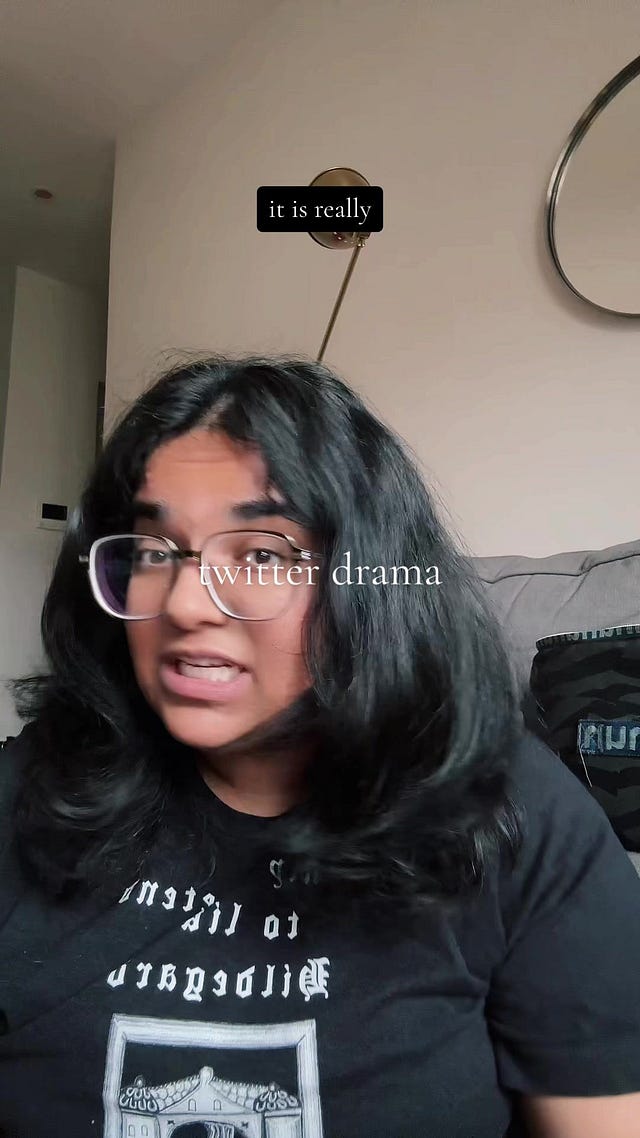Hi friends! I hope you’re all well!
First, things first: Please forgive my recent lack of correspondence regarding last week’s newsletter. In honor of International Women’s Day I decided to observe and take a break from writing to rest in an attempt to right my circadian rhythm (update: it was not successful but its the thought and effort that counts lol). Anyhow, I hope all my girlies had a wonderful IWD and to everyone else, I hope that you had a lovely Friday.
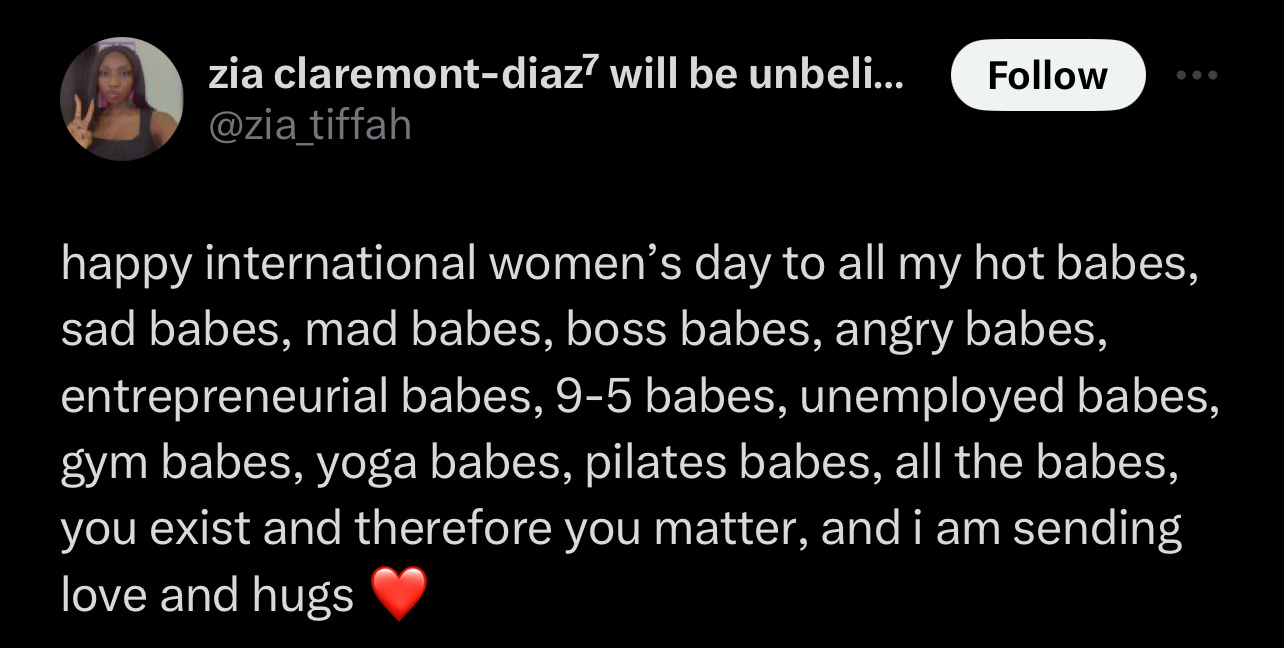
I’m writing to you today from the sunroom, where I’ve settled in for a tad bit of respite. Allow me to set the scene, me with a couple of throw blankets strewn about the chaise, with my copy of Kennedy Ryan’s latest novel, This Could Be Us and a mug full of warm matcha tea. It finally arrived in the post this week and now that I’ve picked it up, I don’t want to put it down. That said, I mustn’t renege on our weekly chat, so I’m exercising some self-control (and little bit of discipline) to jot down a few of the things that I’ve been loving and ruminating over the past two weeks.
Overcome with anticipation for the arrival of This Could Be Us, I decided to put off selecting another title from my March Reading List, as I knew I wouldn’t be fully devoted, so instead I opted to catch up on a few of my favorite newsletters and some great recent articles and thus, I thought it would be nice to do a little media roundup for you to peruse in your down time. So here it goes!
Skylar Mitchell’s ‘Giants’ and the Importance of Culturally Referential Museum Exhibitons and Merchandise…
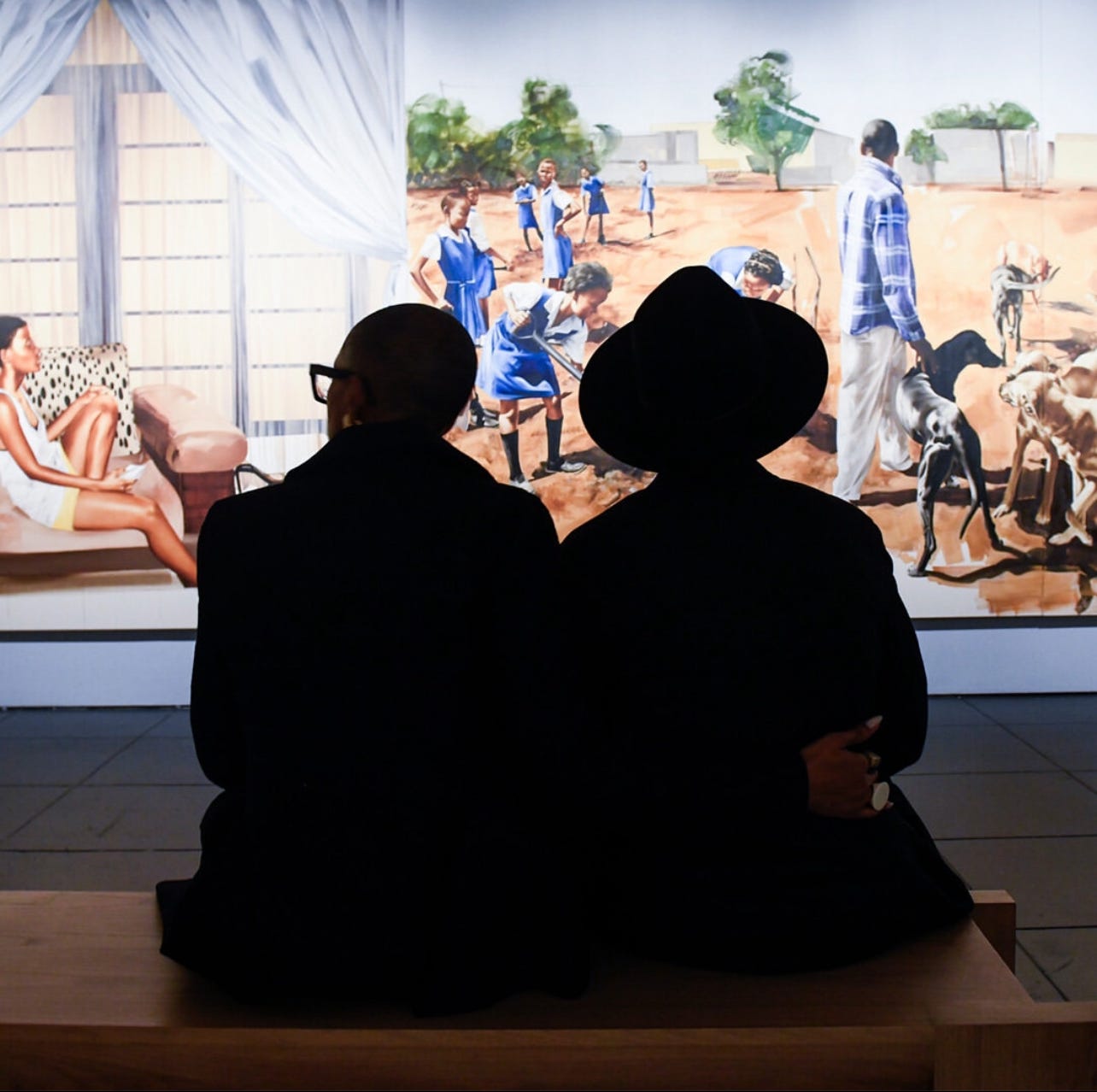
In an article for Essence.com, Mitchell speaks on the role of museum programming as an educational tool for the general public at-large and how it extends to not only include the exhibitions that cultural institutions decide to put on, but also to the ephemera that are created and sold in gift shops, or given out as proof of attendance. As “institutions serves as repositories of a shared heritage,” its important that the items that accompany a show or exhibition play a role in continuing the dialogues that begin within said museums, but ultimately transcend beyond their walls and are designed with the intention to actively educate those who encounter them. When these ideals are internalized, as Mitchell aptly notes, as exemplified by the curatorial and merchandising teams of the Giants exhibition at the Brooklyn Museum, whose work produced items that exist at the intersections of aesthetics, materiality, and education. An example of this, is the museum and exhibition’s collaboration with creative house Savant Studios, which led to the development of items that are in line with the themes present in the exhibit and which felt like a visual continuation of what the viewer had encountered during their visit— becoming much more than a simple keepsake, but also a piece of cultural iconography in the form of personal ephemera to be added to one’s personal archive.
The article was an interesting look at the ways in which museum programming can extend beyond the walls of the museum itself, and how it informs and educates in ways that go beyond the art hung on a wall, or the text of a museum catalogue. The article also delves deeper into and offers a glimpse into the history, curation and mission of the Dean Private Collection — Alicia Keys and Kasseem “Swizz Beatz” Dean’s art collective which has sponsored the Giants exhibition. It was a phenomenal read and has me planning a trip to NY to see the show in person!
.
’s most recent tiktok on romance drama in the twitter-sphere, censorship and its intersections…Sanjana’s voice in the online literary space is one which I hold very dear to my heart. I love the way she dissects her topics into digestible points, while simultaneously offering other articles, books and scholars to the viewer for further research and future reference. She fosters great discussions in her comments section and I’m always inspired to dig deeper and not let the conversation end once the video does. Her most recent video prompted me to consider how the literary hot takes that I often come across like: “what happened to real literature” or “I read books of substance, I don’t read romance,” are an attempt for readers to distance themselves from genres they consider lowbrow or beneath them (with romance fiction/women’s fiction often being their target for disdain). What I find so fascinating about these arguments is how the person who is typically dragging romance (and other genres that they have deemed devoid of xyz) is that it appears as if they are arguing that these art forms have no merit or less than compared to literary fiction, mystery, etc.— that love and joy and friendship and fulfilling partnership is not worth reading or seeing reflected in novels. And I’m reminded of my favorite quote from Dead Poets Society: “…poetry, beauty, romance, love, these are what we stay alive for.” And I believe it is one of fiction’s greatest acts, the act of keeping things alive.
.
Gillian Orr’s In the 2000s every female romcom lead was a journey. In 2024 there’s nothing romantic about that…
Orr’s newsletter Slouching Towards Bernthal Green is a recent favorite of mine. Covering everything from trends in publishing, to her favorite meals, what initially pulled me to Orr’s publication was the title’s nod to Joan Didion and one of my favorite villages in London. I love reading from those who have worked in publishing and print media, because often they share some of the coolest anecdotes from when everyone wanted to work in print media— like 13 year old me, whose bedroom walls were covered in editorials from Teen Vogue and Harper’s Bazaar— which looking back, what a fire hazard it was LOL. This article touches on that early aughts appeal of being the next big fashion editor or writer for a glossy* a la Andie Anderson in How To Lose A Guy in 10 Days or Jenna Rink in 13 Going on 30. However, the dream of working at one of the famed and fabled mastheads hasn’t actually aged well over the past few years, with major publications being shuttered, switching to digital or being considerably downsized, the current state of journalism is in a precarious place. Orr takes the reader on a journey through her time working in traditional print media and how Hollywood has sold the idea of journalism as the ‘It Girl’ career of choice for aspirational young women, and takes a guess on what career field Hollywood will start championing next. A fun read!
*A glossy (magazine) refers to “a magazine printed on shiny, high quality paper, containing a lot of color photographs and advertisements, and usually about famous people, fashion, and beauty.” Think Allure, iD and Harper’s Bazaar, etc. (definition via Cambridge Dictionary)
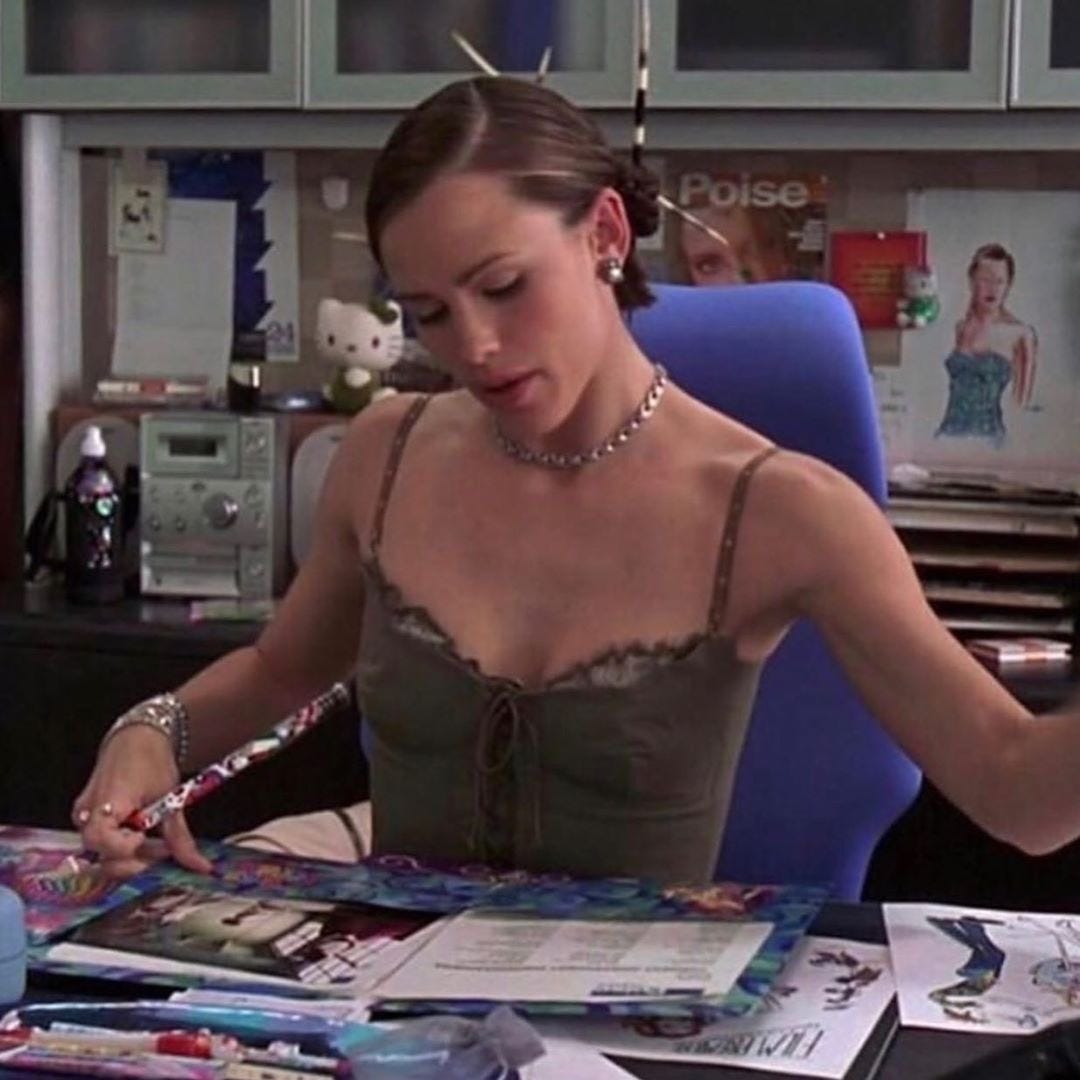
.
Eliza Mclamb’s Everyone’s Writing Sounds the Same Now…
I first began following Eliza on TikTok, having discovered her music during the early stages of lockdown in 2020. I loved her brand of storytelling and the way she shared anecdotes about her life, so when I recently came across her newsletter, I was excited to see her taking on a new medium of storytelling and have been enjoying working my way through her newsletter archives. One of her more recent posts, Everyone’s Writing Sounds the Same Now, provides poignant commentary on the popularization of writing amongst young women today, specifically the rise of essays on girlhood (I wrote my own not too long ago). And while there are valid criticisms, I enjoyed Eliza’s take which argues that 1) this is a symptom of cyclical culture— that the rise of young women writers, is just like anything in pop culture that becomes a cultural zeitgeist and will ultimately fade out of popularity for many, eventually leaving only those who are dedicated to continue on in solitude; and 2) that no artist or creative exists singularly without pulling inspiration from those who came before them and those around them— and writing, is no different. I really enjoyed her paralleling this phenomenon with the way musicians work, having “musical famil[ies].” And how today’s artists are all creating as a result of something they heard, or saw, or read, that changed their lives. It also prompted me to reconsider one of my favorite documentaries, Black Art: In The Absence of Light, and how Kerry James Marshall spoke about one of the first paintings he ever made, and how he had created it in the style of Charles White, a prolific Black painter from the generation before him. It was through experimenting with the styles of those who he looked up to that he was able to cultivate his own creative voice. An acknowledgment of the fact that you don’t just wake up and become the greatest writer, artist, musician, etc., it only comes by way of studying your craft, and producing good work and, not so good work, that you are able to find your voice, and ultimately cultivate a precise and unique vantage point by which to produce exemplary work from.
My favorite part of the essay is when Eliza writes:
“There’s a reason that most introductory classes on songwriting or fiction or filmmaking will usually include an assignment that involves replicating a strategy done by a work you admire. You can’t ride a bicycle if you’ve never seen someone do it before. You can’t learn to play an instrument without learning other people’s songs. As much as people are precious about their craft and the idea that all of their output be credited to their own innate genius, you will never make something in your life that does not have the touch of another artist on it. That’s how it works. It’s spectacularly beautiful.”
I keep returning to this quote, as I read and find myself inspired to write by the words of my favorite writers. And maybe you’ll find some inspiration of your own in her article.
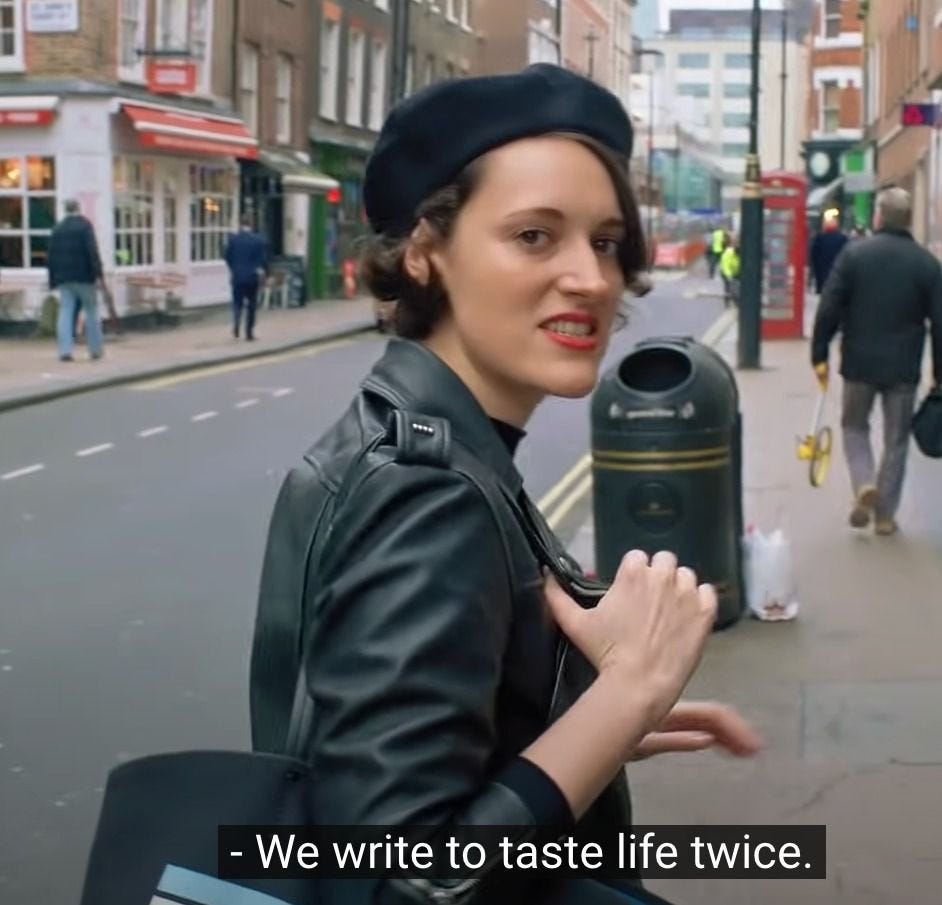
.
Jazmine Hughes’s cover profile of Julianne Moore for The Cut’s Spring Fashion Issue
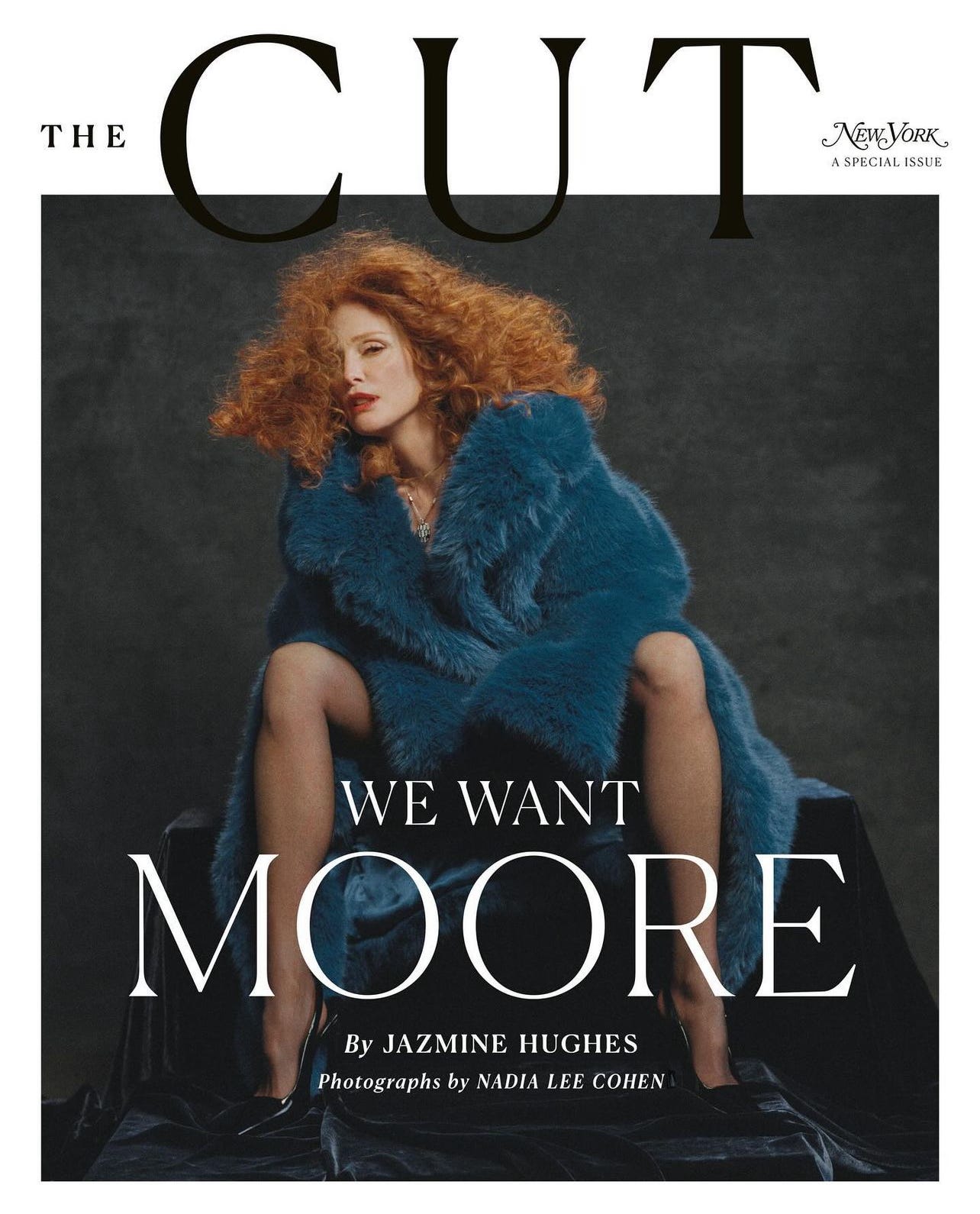
The Cut is one of my favorite fashion and style publications of all time. I’m a big fan of the magazine’s EIC, Lindsay Peoples and follow various writers and contributors of the magazine on Instagram. It’s one of my dreams to write for them one day. I’m also a big Julianne Moore girly and the editorial spread for this issue, is easily one of my favorites of the year, so far. In the profile, Hughes and Moore discuss Moore’s love of New York, career highlights and her commitment to taking on acting roles that investigate the human condition. I really enjoyed the way the article delved into some of her notable roles, which definitely added some new movies to my ever growing watchlist, as well as other accomplishments outside of her acting career. It was a great look into the public persona of an actress whose work I really enjoy and a fun read. And if not for the interview, you have to check it out for the photos alone— shoutout to Nadia Lee Cohen!
.
And lastly, Halima Jibril’s piece on the merits of self-documentation and the commodification of our daily lives for Dazed Digital
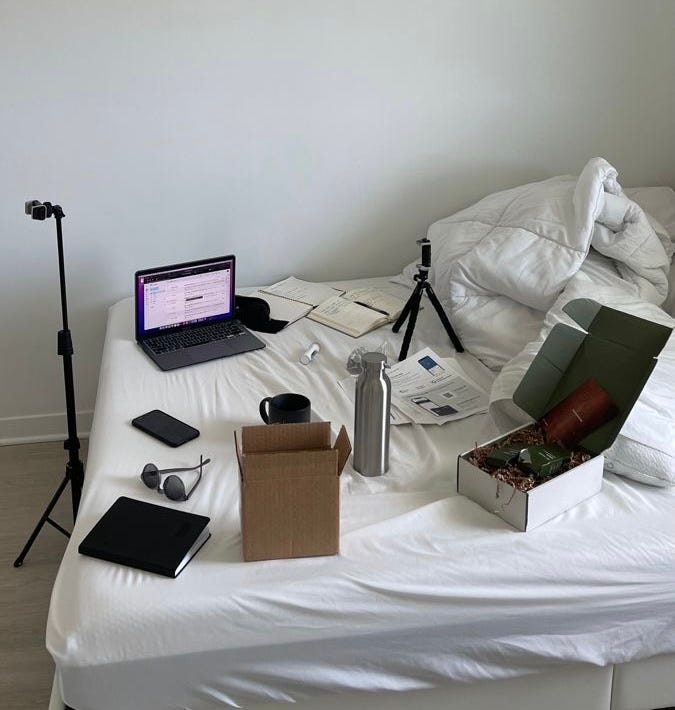
Jibril opens up the article by referencing an article published in The Atlantic in 2012, that described a phenomenon known as ‘The Facebook Eye,’ in which “our brains [are] always looking for a moment where the ephemeral blur of lived experience might best be translated into a Facebook post; one that will draw the most comments and likes.” And as someone who is a retired YouTuber/beauty influencer and formerly someone who was “chronically online,” I found this article to be a really interesting interrogation about this growing need I see amongst my generation to ‘document everything’. The article presented valid criticisms and at the same time, I understand the merit in how people all across the globe have found community and life-long friendships through apps like Instagram and TikTok.
For me, social media is how I stay connected with the bulk of my friends who are spread out across the continental U.S. and abroad, but at one point it was a source of income and a job. And even now, being removed from that space to a certain degree, there are days where I still feel “bad” when I’m not posting consistently. In an effort to have memories to look back on, I wonder have we placed too much emphasis on capturing the perfect image and forgone the beauty of nostalgia and fleeting moments that we’ll look back fondly on decades from now? And where is the boundary line to know when we’ve gone too far or shared too much? This line of thinking inspired by the article felt very reminiscent of a recent clip I saw on Twitter of Laverne Cox talking to a young creator, lovingly reminding them that not everything about our lives should be broadcast for public consumption. Some things should be just for ourselves. A point that is also argued in Freya India’s newsletter GIRLS, that Jabril also referenced. And while I did not come to any concrete conclusion regarding my own social media habits, both articles present great arguments that I’ll be sitting with for quite awhile, and I highly recommend giving them both a read!
I truly do hope that you have enjoyed the stories, articles and discussions, that these writers and thinkers are unpacking in their respective mediums. And my hope is that maybe you’ve found a new writer to follow and support. Also, a reminder, that everyday, is a great day to celebrate the amazing women in your life — don’t limit yourself to just this month! Take them out for coffee, ask them how you can help make their lives easier or Venmo them a couple dollars for being their lovely selves. Oh, and give them a hug, if you can. The world needs more hugs. As always, thanks for reading and talk soon!
xx gabi



